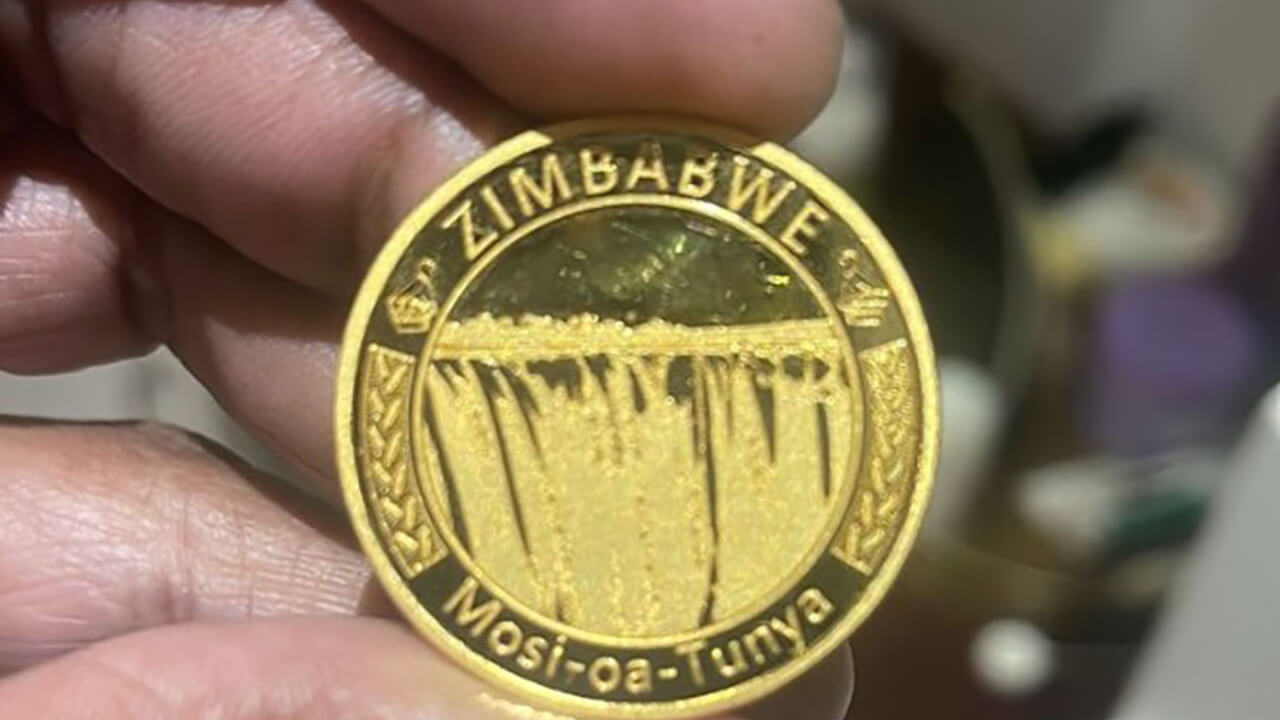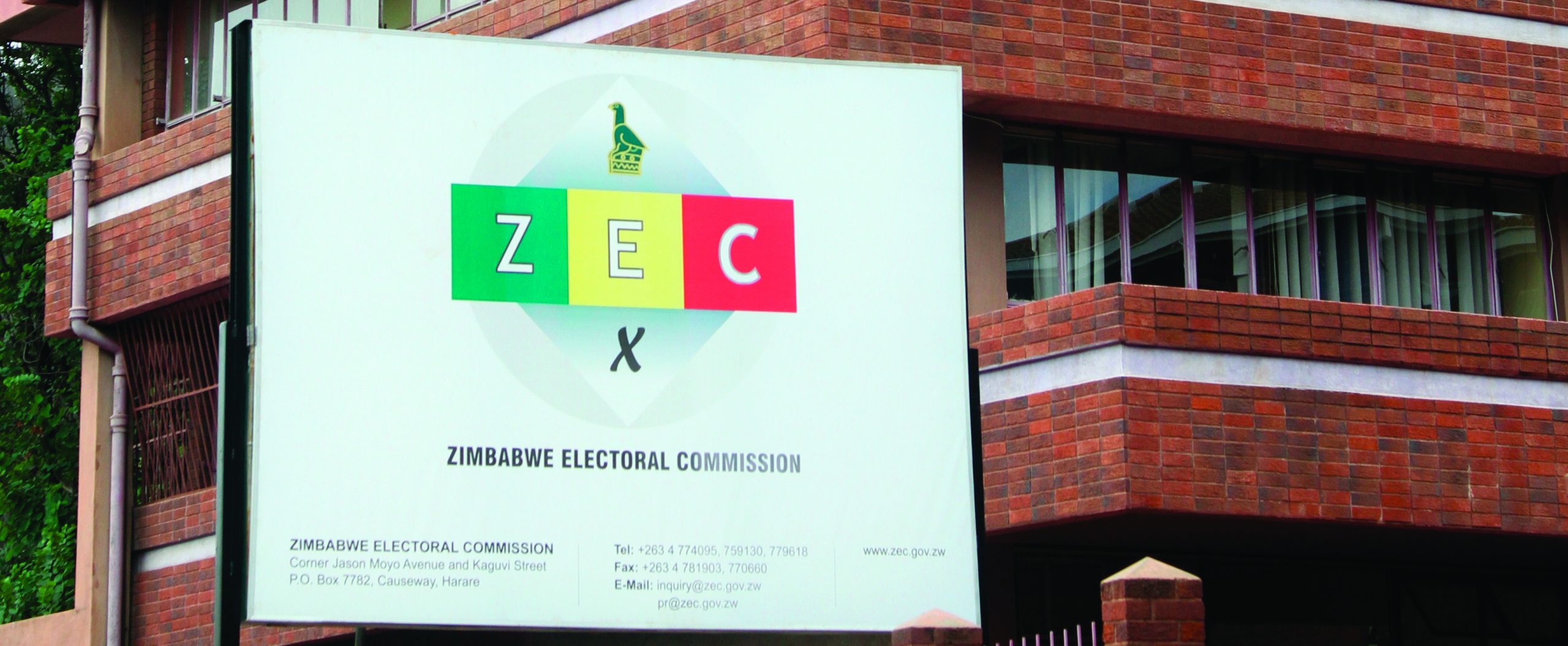
BY COURAGE MUSONA Of late, the “Mosi-oa-tunya” coin, named after the iconic Victoria Falls, is the talk of the country.
The multi-million dollar question now is whether the unprecedented economic policy measure is the panacea to runaway inflation that has left the economy in a moribund state.
Zimbabwe’s galloping inflation, which now stands at around 257%, is one of the highest in the world.
The efficacy of gold coins in stabilising the local currency in free fall, has attracted the attention of many economists and policy analysts.
Technocrats in the space of public policy analysis are put on the “horns of an intractable dilemma.”
The bone of contention is whether the country had finally found the remedy to address its economic crisis.
Renowned economics professor Gift Mugano scoffed at the idea that the coin could fix the economy, especially in the 21st century when more and more currencies are going virtual.
“We seem to be going back to the 19th century when people traded with gold,” said Mugano.
- Chamisa under fire over US$120K donation
- Mavhunga puts DeMbare into Chibuku quarterfinals
- Pension funds bet on Cabora Bassa oilfields
- Councils defy govt fire tender directive
Keep Reading
On the other hand, proponent of the “Mosi-oa-tunya” coins and member of the Reserve Bank of Zimbabwe’s monetary policy committee Persistence Gwanyanya said the coins were expected to provide a “viable alternative to the US dollar as a store of value.”
In his view, gold coins will reduce the demand for US dollars and thus stabilise the Zimbabwe dollar to the benefit of everyone in the economy.
Some economists and public policy analysts have been much less circumspect about the ability of economic analysis to uncover the causal mechanism that underpins market outcomes.
I appeal to fellow economists to resist the “pretence of exact knowledge” in economic analysis.
I strongly believe that no economics model would ever render fully intelligible the causes of market outcomes or the consequences of government policies.
Thus, experts at the RBZ just as all individuals, act in a world of imperfect knowledge; hence, they can comprehend neither the full range of possible [market] outcomes nor their likelihoods.
To predict the outcomes of a policy with precision requires a lot of creativity from the apex bank, which I personally believe is lacking.
In fact, over the past three decades economists have come to believe that, to be worthy of scientific status, economic models should generate “sharp” predictions that account for the full range of possible market outcomes and their likelihoods.
To construct such models, which we refer to as fully predetermined, contemporary economists must fully pre-specify how market participants alter their decisions and how resulting aggregate outcomes unfold over time.
I strongly feel that such models are key, especially in an economy like Zimbabwe, where behavioral economics which is mostly misunderstood, dominates.
In Zimbabwe, economic policy is often rendered sterile by behavioural and not fundamental issues.
For instance through ubiquitous speculation, some could buy gold coins using local currency and then sell in dollars later.
This will distort the results envisaged by the central bank governor.
Zimbabwe is not the first country in the world to use gold coins, some countries started minting gold coins as early as 1800.
Gold coins have been used as a currency for more than 5 000 years.
Today, legal gold coins are minted by governments as well as banks around the world, and sold to investors and collectors worldwide.
Closer to home, in South Africa they have their own gold coin which they call Krugerrand.
Internationally, gold coins are used in countries such as China, America, Canada and Australia among others.
In these countries gold coins are also used to hedge against inflation and as an investment vehicle.
However, these countries have relatively stable macroeconomic environments, so we cannot assess the efficacy of gold coins in taming inflation in the aforementioned countries.
Further, gold coins are not as widely used as currency in these countries as envisaged by RBZ.
To this day, gold represents the ultimate form of wealth and prosperity.
Stability and the high value of gold are some of the reasons why investors decide to invest in coins.
For this reason, we expect to see a huge uptake of these gold coins since Zimbabwe is in a chronic hyperinflation.
Companies and individuals with excess cash can find the coins useful to store value and also as an alternative investment asset.
If this happens, it means the demand for US dollar on the black market will be suppressed.
Resultantly, gold coins can close a self-reinforcing loop in Zimbabwe where US dollar exchange rates increase lead to price spikes that further fuel inflation, which results in a further increase in US dollar rates and so on.
The intriguing question is, will gold coins work in this way to tame runaway inflation in Zimbabwe? The answer is yes, however, if and only if certain conditions are met.
Firstly, as I have mentioned earlier, there is a certain level of creativity required at the apex bank, to close every arbitrage opportunity.
Secondly, I personally feel that, the gold coins must be convenient to use and very liquid as well.
They must not just perform the store of value function of a currency but also work as a medium of exchange.
Due to an inherent psychology of value perception in the US dollar, which has an insatiable demand in Zimbabwe, where some local retailers are reportedly rejecting the local currency for certain basic commodities, it is most likely that corporates and individuals will always chase for US dollar because it is convenient and liquid.
Thirdly, the governor faces a formidable task each day to try and manage money supply, in a time where elections are fast approaching.
It is during this time when economies experience political business cycles.
A restrictive monetary policy is always desirable in an economy with too much liquidity.
Lastly but equally important, there is need to boost confidence and trust in the economy if gold coins are to succeed.
While it is true that the value of gold coins is inherent and continues to grow during uncertain economic times, the success of gold coins in taming Zimbabwe’s inflation largely depends on public trust and confidence. Trust is crucial for ensuring the success of a wide range of public policies that depend on behavioral responses from the public. The erosion of public trust challenges government’s capacity to implement policies and carry out reforms that benefit the economy at large. It is evident that, trust in Zimbabwe’s currency is low after people saw their savings wiped out by hyperinflation in 2008.
Trust deficit and government inconsistent policies is Zimbabwe’s Achilles Heel.
Trust can be restored if the nightmare of 2008 is finally exorcised from the brains of the citizens.
A well-known economist commented that, “Zimbabwe’s hyperinflation was much more devastating than its liberation war or the oppression from which it liberated them”, and to this day we still suffer for it.
Confidence and trust must be created through government policies that foster sustainable economic growth.
Further, this requires leadership and institutional integrity and demonstrable competence and accountability.
My humble submission is that, gold coins will bring desired results if confidence is restored, arbitrage opportunities are closed and if RBZ espouse restrictive monetary policy.
- Courage Masona is an conomist and lecturer at the Zimbabwe Ezekiel Guti University For feedback: [email protected]
- *These weekly articles are coordinated by Lovemore Kadenge, an independent consultant, past president of the Zimbabwe Economics Society \and past president of the Chartered Governance & Accountancy Institute in Zimbabwe. Email- [email protected] and Mobile No. +263 772 382 852










